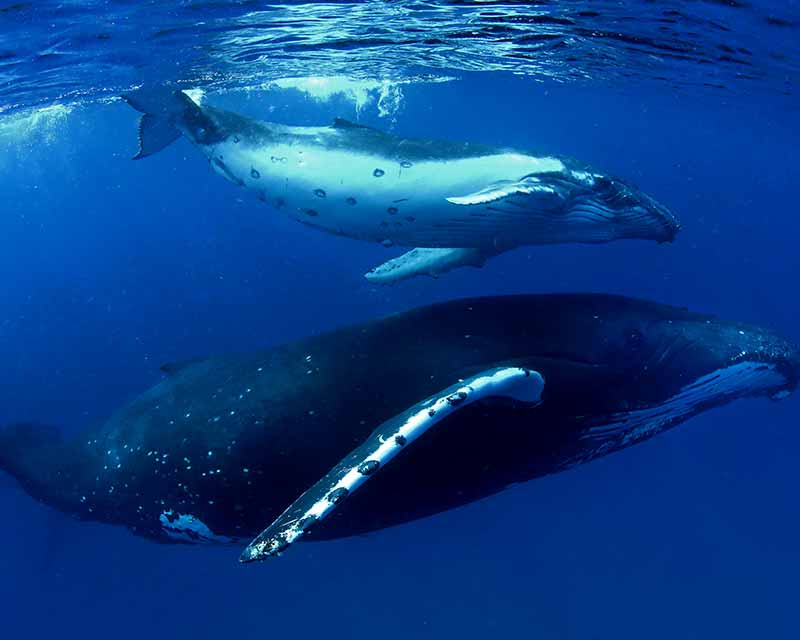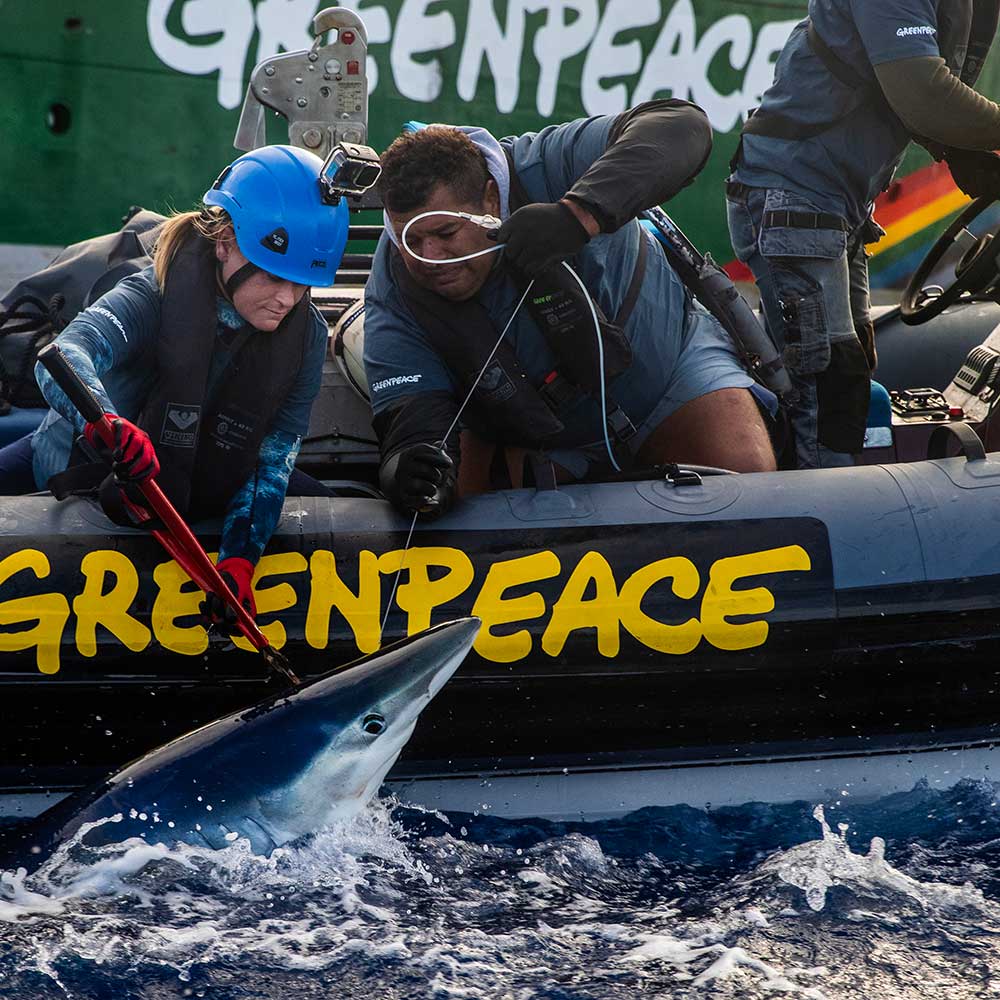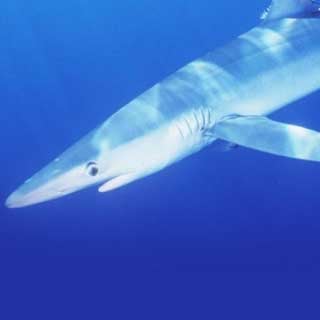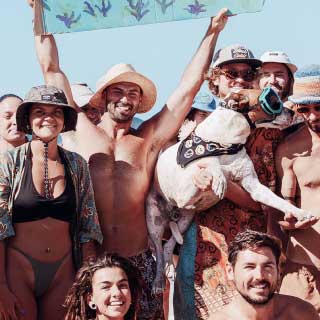Will you help draw the line on destructive industrial fishing? Make a tax deductible donation now.
DONATE NOW
I would like to give:
Your account will be debited today, then every subsequent 4 weeks. Get in touch with us to arrange an alternative date.
In making a donation to Greenpeace Australia Pacific, you will be providing us with your personal information. We may use your information to enable us to process your donation, communicate with you about your donation and inform you about our campaigns. Your information is safe and secure with us – for more information please see our Donor Collection Notice and Privacy Policy.
Your generous tax deductible gift helps fund our campaigns for a better and greener future.
In making a donation to Greenpeace Australia Pacific, you will be providing us with your personal information. We may use your information to enable us to process your donation, communicate with you about your donation and inform you about our campaigns. Your information is safe and secure with us – for more information please see our Donor Collection Notice and Privacy Policy.
Help us raise $100,000
Every dollar donated until this Friday will be DOUBLED thanks to some generous donors.
Help us draw the line on destructive industrial fishing.
Target
You can help protect the Tasman Sea from longlining

$30
can help build awareness and mobilise public support for an ocean sanctuary in the Tasman Sea.

$60
can help pressure the Australian government to bring the UN Global Ocean Treaty into law and create an ocean sanctuary in the Tasman Sea.

$150
can help power Greenpeace ships like the Rainbow Warrior to bear witness and expose destructive fishing practices.
Help create one of the world's first global ocean sanctuaries free from destructive industrial fishing.
We’re racing to the Tasman Sea - before it’s too late
Greenpeace’s Rainbow Warrior ship has been confronting destructive industrial fishing at the Tasman sea, where marine life is being devastated.
Our crew disrupted an industrial fishing operation near Australia and New Zealand. We retrieved almost 20km of longline fishing gear, and over 210 baited hooks from a EU flagged industrial fishing vessel.
These longliners are industrial killing machines - their lines catch fish, but they also catch and kill sharks, turtles, seabirds and other animals. Only to discard them overboard.
Their brutal activities in the open ocean are hidden from the world. But our mission has exposed the reality.
We need to stop this destruction - now.
An ocean sanctuary in the Tasman Sea could put it off limits to destructive industries and give marine life a safe haven to recover and thrive.
You can help Greenpeace demand urgent action from Australia's new government at the UN Ocean Conference this June.
Blue sharks need your help
Sharks are being caught as bycatch and discarded. Tens of millions of sharks are caught every year around the world. Greenpeace is demanding protection through an ocean sanctuary.
We need an ocean sanctuary in the Tasman Sea
We need an ocean sanctuary in the Tasman Sea
The Tasman Sea is more than a stretch of water. It is a living, breathing corridor of marine life. Recognised by the United Nations for its extraordinary biological significance, this region should be one of the first protected areas under the Global Ocean Treaty.
Lord Howe Rise and the South Tasman Sea are home to vulnerable sharks, turtles, whales and dolphins; ancient deep sea corals; colossal underwater mountains; and some of the world’s most important seabird populations.
An ocean sanctuary could mean an end to destructive practices like bottom trawling and longline fishing, creating a haven for a stunning array of marine life to recover and thrive.
The Tasman Sea – what's at risk.
In longline fishing turtles, sharks, dolphins, whales, and seabirds are often caught as bycatch - entangled or hooked.

Blue Shark
STATUS: Near-threatened
Blue sharks are the most heavily fished species in the world. Known for their intelligent and inquisitive nature, these champion long-distance swimmers can travel over 9,000 km across the global ocean during their annual migrations.
In the Tasman Sea, blue sharks are the most commonly caught shark. Most are caught as bycatch, hanging from longlines in their thousands and hauled on deck only to be unhooked and discarded – some maimed, dead, or dying.

Leatherback turtle
STATUS: Vulnerable
Longline fisheries hook thousands of sea turtles each year. Many turtles swallow baited hooks or become entangled in lines, leading to injury, drowning, or deaths after being released.
Leatherback turtles are one of the most frequently caught species in the Tasman Sea. In the Pacific, leatherback turtles have declined more than 95% in the last 25 years.

Antipodean Albatross
STATUS: Endangered
Endangered mostly due to high bycatch rates from longline fishing, particularly in the South Pacific and Tasman Sea, where they are frequently hooked and drowned while scavenging baited fishing lines.

Bottlenose Dolphin
Dolphins can become entangled in longlines or ghost gear while feeding. These lines, stretching up to 100 kilometres, can wrap around their fins, tails, or mouths, causing injuries, infections, or even starvation if they can’t swim or feed properly.
They can also target the baited hooks for food, risking injury or infection from accidentally swallowing them which can lead to swallowing hooks or getting their mouths injured, leading to infections or internal damage.

Humpback Whale
Humpback whales migrate through the Tasman Sea. The presence of longline fishing vessels in critical habitats can disrupt whale migration routes and may alter their natural behaviours, avoiding key feeding or breeding areas due to high fishing activity.
Whales can become entangled in longlines or ghost gear while foraging for food. They often get deep cuts or infections and can starve if they are unable to swim or feed properly.
Help make the Global Ocean Treaty law

People like you helped secure the UN Global Ocean Treaty in 2023. This was a historic moment.
But a treaty only has power if governments bring it into law.
We are calling on the new Australian Government to take this crucial step within their first 100 days in power.
This will pave the way for one of the first international ocean sanctuaries in the Tasman Sea.
The clock is ticking.
Will you help push Australia’s new government to seize this once-in-a-generation chance to show real global leadership in ocean protection?

Will you help draw the line on destructive industrial fishing?

48
Years
Greenpeace Australia Pacific has been fighting to protect our ocean

438,500
Blue Sharks
Killed in 2023 by longlining in the Pacific, our investigation exposed

54,363
People like you
Have made their voices heard to save our ocean
Make a tax deductible donation now.



